Abstract 3/2019
Table of content
Maciej Helbin, Olgierd Wyszomirski – The use of modern technologies to control transport services on the example of the Public Transport Authority in Gdynia
Stanisław Krawiec, Krzysztof Krawiec – Implementing of electric buses to public transport – theory and practice
Elżbieta Załoga, Zuzanna Kłos-Adamkiewicz – Transport needs of ageing society
Wojciech Szymalski – Changes in the number of people traveling by various means of transport in Warsaw during the closure of the Łazienkowski Bridge
Kazimierz Jamroz, Jacek Szmagliński, Sławomir Grulkowski, Krystian Birr – Methodology for assessing the safety of tram transport in Gdańsk
Abstracts
Maciej Helbin, Olgierd Wyszomirski
The use of modern technologies to control transport services on the example of the Public Transport Authority in Gdynia
Abstract: Developing technology is entering all areas of human activity. One of these areas is urban transport. Vehicles serving large cities and agglomerations are increasingly equipped with on-board computers, GPS sensors, passenger counting systems and traffic control systems. This enables much more efficient organization and management of urban transport services, including its control. Control is one of the most important tasks carried out by the transport organizer. With the development of technology, this task began to be implemented using modern traffic control systems. Apart from fulfilling their dispatcher’s function of day-to-day traffic management, these systems also collect comprehensive data on the performance of the timetable. Having a whole or almost entire set of data provides much greater freedom of exploring it, it allows analyzing data from different perspectives or a closer look at some of their cross-sections. The use of programming languages, on the other hand, allows us to bring them to the desired form and define rules for examining operators’ departures from the timetable. The article presents possibilities of using this type of data to control the services of transport on the example of the intelligent traffic management system TRISTAR used by the Public Transport Authority in Gdynia.
Key words: urban transport, transport control, transport service, traffic management system
Stanisław Krawiec, Krzysztof Krawiec
Implementing of electric buses to public transport – theory and practice
Abstract: Currently there is a broad discussion in cities and agglomerations about the future of bus fleets used in public transport. The entities and institutions responsible for the bus fleet development are facing a problem that can be defined as follows: how to adapt the fleet to the growing environmental requirements? One of the options is the conversion of the fleet functioning nowadays – conventional or mixed – to a 100% electric bus fleet. The article defines the barriers hindering the achievement of 100% electric bus fleet in public transport as well as shows possible strategies of introduction of electric buses into operation. The authors focused on practical and organisational factors of the fleet conversion process, not including an economic analysis. The article also presents completed and current research and development works supporting development of implementation of the electric buses to public transport. These works are financed by the National Centre for Research and Development and are realised on the international forum enabling better consideration of different local conditions of different countries.
Key words: public transport, electric buses, fleet conversion
Elżbieta Załoga, Zuzanna Kłos-Adamkiewicz
Transport needs of ageing society
Abstract: The average life expectancy of a resident of the Earth is prolonged. It is caused by the improvement of the life standard as well as the progress in medical sciences. The natural aging process limits the ability to move, causes disability and is often combined with psychological changes that have a significant impact on mobility. The current generation of older people is much more active than the previous ones, however the importance of particular means and ways of moving, including public transport, changes with age. Transport needs of older people are not homogeneous. A group of older people is also heterogeneous. Extensive studies on the mobility of an aging society in developed economies indicate the guidelines for desired actions in the area of transport. The article presents forecasted changes in the EU demographic structure and characteristics of transport needs and mobility patterns of older people. Selected projects concerning actions to promote public transport among older people were pointed out. Statistical data of EUROSTAT and GUS as well as results of research carried out within the EU projects have been applied.
Key words: public transport, elderly, mobility
Wojciech Szymalski
Changes in the number of people traveling by various means of transport in Warsaw during the closure of the Łazienkowski Bridge
Abstract: Article shades a light on impact of Łazienkowski Brudge closue on outcomes of the Warsaw Traffic Research in 2015 through analysis of alternative set of public opinion pools called “the Warsaw Barometer”. Warsaw Traffic Research in 2015 was held during accidental closure of the Łazienkowski Bridge what influenced the research results. Answers to the additional questions added to the research prove that passengers who had affected by the closure of the bridge changed their travel behavior mostly towards travel with public transport. Public opinion pools as a part of “the Warsaw Barometer” have been compiled in time series and analyzed in the scope of changes declared by respondents the frequency of using various means of transport in Warsaw for periods before, during and after the closure of the Łazienkowski Bridge. This alternative set of results show, that on the contrary, use of different modes of transport might change towards more car travel during the closure. This causes a reflection, that the attempt to catch the impact of the closure made during Warsaw Traffic Research in 2015 may not be accurate, what results with a problem in assessing the Warsaw transport policy since previous research was held 10 years before. In light of this arguments, it is recommended, that next Warsaw Traffic Research should be conducted in five years after the research in 2015.
Key words: Warsaw Traffic Research, Łazienkowski Bridge closure, Warsaw Barometer
Kazimierz Jamroz, Jacek Szmagliński, Sławomir Grulkowski, Krystian Birr
Methodology for assessing the safety of tram transport in Gdańsk
Abstract: Both in Poland and in most of the countries in European Union, the tram infrastructure is developing intensively. Contemporary low-floor trams are constructed on the base of different technical solutions than typical rail vehicles or high-floor trams. In Poland, such vehicles often operate on lines designed in accordance with standards developed for typical rail vehicles. At the same time, the volume of road traffic and the number of people who use bicycles in cities is increasing, causing more dangerous situations at contact points of different modes of transport. The article is devoted to the analysis of safety hazards in tram transport and the indication of methods for their reduction. It is a specific analysis of the risk occurring in tram transport. The article presents the division and description of factors causing a threat to the safety of tram traffic. Threats have been divided for reasons and effects. Among reasons the human factor – vehicle – traffic – surroundings have been listed. Based on the analysis carried out on the tram network in Gdańsk and on the rolling stock used in Gdańsk, the main threats to tram traffic safety were identified.
Key words: urban transport, tram transport, transport safety

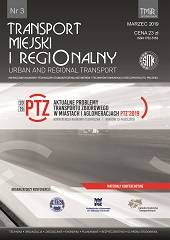
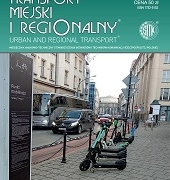 SITKRP
SITKRP 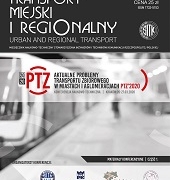
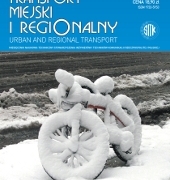 SITK RP
SITK RP 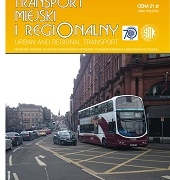 SITK RP
SITK RP 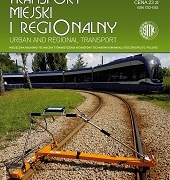
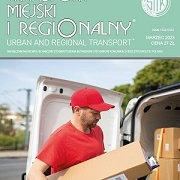 SITKRP
SITKRP 

